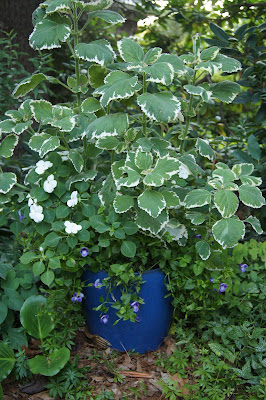The reason to let leaves lie on the ground through the winter is that so many species use that leaf layer for shelter. Most butterfly and moth species don’t migrate. They need to make it through the cold months in some stage of their life cycle, whether it be as an egg, a chrysalis, or an adult. Bumblebees don’t gather in hives, and they too welcome an insulating cover of leaves over the shallow holes in the soil where their queens spend the winter.
 |
| Fertilized bumblebee queens survive the winter in holes in the ground |
I’m working to welcome these insects and many others to my garden: leaf-eaters, pollinators, and the beneficial insects that, as predators, keep bug populations in balance.
 |
| Dragonflies are top predators, useful for keeping leaf-eating insects in check |
I’m counting on these native insects at the base of the food web to keep my plants healthy and my garden a welcoming place for birds and other animals. The three pillars of this approach are avoiding pesticides, choosing the right plants, and letting those fall leaves lie on the ground.
 |
| It might look messy, but letting leaves lie is more sustainable |
To help out native insects, I’ve completely discontinued pesticide spraying, even for nonnative pests without local predators. That’s to avoid killing off native insects with friendly fire. No insecticide is so targeted that it doesn’t cause unintended casualties.
 |
| In the woods, leaf litter is free of pesticides and stays undisturbed on the ground. |
I’m also choosing plants with the insects in mind. Last week students at a hands-on Newton Community Education course in the yard helped plant my latest insect-attracting shrub, a New Jersey tea (Ceanothus americanus), adding more native flowers to offer pollen and nectar in spring.
 |
| New Jersey tea flowers offer premium pollen and nectar |
This little shrub will grow into a 3-foot mound and attract butterflies and hummingbirds to its white or pale lavender flowers.
I’m looking forward to experiencing New Jersey tea’s spring fragrance. It’s drought tolerant once established, which fits with my efforts to water less. Right now it’s leafless, showing a few of the yellow twigs that will stand out in the winter landscape when it settles in. When next year’s leaves fall to the ground, they'll help insects through the winter.
I could undo some of the benefits of planting insect-friendly perennials and shrubs by bagging up my tree leaves and setting them out at the curb for yard waste pick-up.
 |
| Insects lose winter habitat when organic material goes out as yard waste-photo Bill Barber |
The Xerces Society warns that sending away those fall leaves--or chopping them up with a lawnmower or leaf shredder for mulch—would be discarding or destroying insects and their eggs and larvae already sheltering among the leaves.
Not shredding leaves for mulch will save a lot of time and energy. I can spend some of that time piling leaves around trees and shrubs that could use some extra insulation. And there’ll be time to cook up lots of schemes for moving plants around next spring. That’s the beauty of a garden. It’s never finished.





















